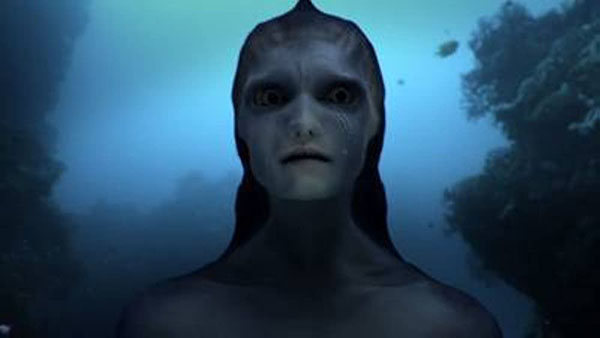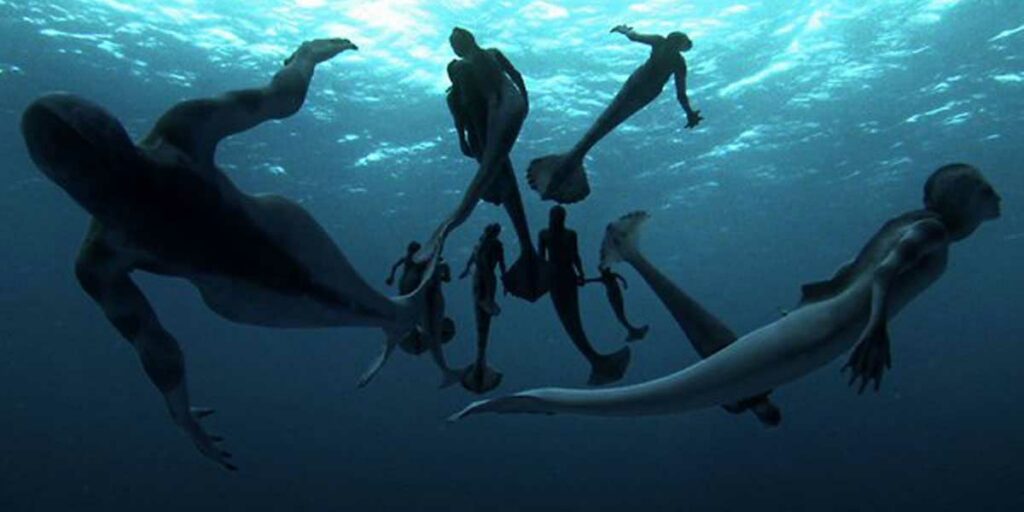Mermaids: The Body Found details scientists from NOAA finding mermaids. Though the premise is interesting, the idea comes across as confusing and a bit misleading.
Within the world of professional wrestling, there exists an idea called “kayfabe”. As most wrestling is fixed and focused on the performative aspect, wrestlers are expected to play up the character and integrate it into their media persona, even if they are not in the ring. Kayfabe is most common in performance art, but it can feature in any sort of dramatizations including in movies. One prominent example of a movie which leans perhaps a bit too much into kayfabe is Mermaids: The Body Found, a 2011 mockumentary airing on Animal Planet which blurs the lines between reality and fantasy. While presented like a documentary detailing shocking evidence of mythical mermaids existing, it does nothing to illustrate to viewers that it is a work of fiction.
This presentation comes across as manipulative because the film goes so far into its hypotheticals, it forgets to describe itself as fiction. To the viewers who wanted to watch Animal Planet for scientific value, they instead found a strange piece of speculative fiction taking itself too seriously. For viewers who were into fantasy, it was just a poor exercise of a hypothetical, claiming the existence of mermaids with few strong claims and a confusing framing device for the concept.
Mermaids: The Body Found details scientists from America’s National Oceanic and Atmospheric Administration (NOAA) observing mass beachings of whales. These beachings are stated to have been caused by tests of sonar weaponry from the U.S. Navy. Within the findings of these whales, they observe some odd marks on the carcasses. From the debris, they also find a strange structure resembling a fin, and the logical conclusion they jump to is that mermaids are real. Most of it is presented as in-person interviews and found footage, with the acting and direction following kayfabe, as the actors communicate as though they are professionals rather than paid performers.
Unlike earlier speculative documentaries such as Dragons: A Fantasy Made Real and Alien Planet, Mermaids is not presented as a narrative film but detailed as though it were indisputable fact. When the program first aired in 2011, many viewers fell for it, with several posts on social media claiming they believed in the existence of mermaids. NOAA even had to intervene and explain it was a work of fiction. But with the presentation so muddy and the science so incredulous that the movie fails at its core principles of informing or entertaining its audience.

The documentary attempts to justify the existence of mermaids using what we know about science. One of the bases for mermaids comes from the Aquatic Ape Hypothesis, a fringe scientific view suggesting human features like excess baby fat and hand webbing are indicative of how a portion of the human evolutionary path was conditioned for life in the water. The Aquatic Ape Hypothesis has been by and large rejected by the scientific community for having no backing in DNA or the fossil record. Also, it has not been linked to mermaids, as aquatic apes in the hypothesis still bear something resembling modern human anatomy.
As a thought experiment, and as a work of fiction about a potential human subspecies, this could have worked; it is the citation as serious science which seems a bit far-fetched. The frame story of the investigation of mermaids is broken up by small vignettes of how these creatures live, just like many nature documentaries use for dramatic effect. The transitions from the host testimonials to the mermaid scenarios have little buildup or lead-in, making the pivot into the hypothetical portions feel jarring. Oftentimes, the segments tell stories unrelated to the theme of mermaid discovery or how they remain hidden, which makes them feel pointless in the film. These segments could have been a fine “what if” scenario in their own separate movie, but as presented, it does not mesh with the tone of the documentary well.
Suspension of disbelief could perhaps be granted for the existence of mermaids, but not when the science used to explain them is outdated. The whole basis for the existence of mermaids is an unusual sound traced by NOAA in 1997 called “The Bloop”. The Bloop is one of the loudest noises on record registered within the Atlantic Ocean. For years, nobody was certain of anything on Earth which could create such frequencies, which spawned many theories about a source. According to the movie, mermaids communicated among themselves and hunted prey by creating the Bloop and registering their presence across the ocean. However, in 2005, a team of NOAA researchers traveled to Antarctica and were able to confirm the source of the noise as the sound of a glacier falling apart. The Bloop having been debunked so long before the show came out pushes suspension of disbelief too far, and ruins the kayfabe aspect of it.
The movie Trollhunter, about a film crew in Norway investigating legends about trolls, is also a speculative documentary, but is able to have fun with its presentation and is more self-aware. Nobody on the crew is serious and it is an enjoyable time for both the cast and the viewer. This execution of kayfabe is a positive example as it includes a sense of self-awareness and is not pushing any agenda. This is not the case with Mermaids. The acting and directing go full force for the serious effect, leading to disruption of facts and repressing actual science for pseudointellectual ideas and making the whole film and its promotion feel deceptive. If anything, the movie would have been better if it had been even more outlandish, exaggerating its claims in such a way nobody could take it seriously.
Mermaids: The Body Found had potential as a hypothetical piece, but the way itis presented seems to fuel conspiracy theories and engender fear and distrust in government agencies. If anything, the film serves as a cautionary tale about the dangers of miscommunication and how extreme reactions can be when fiction is treated too much like fact.
Mermaids: The Body Found is now available to watch on digital and on demand.

